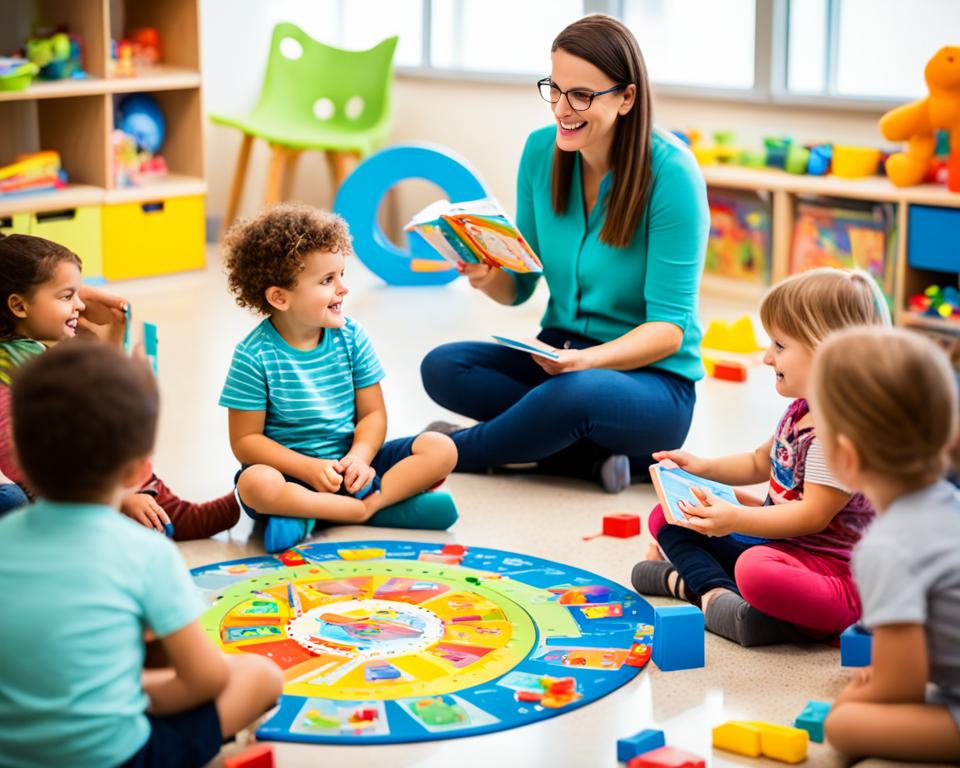As an experienced early childhood educator, I’ve dedicated my career to ensuring that every learning session in the classroom is purposeful, engaging, and conducive to the overall development of young learners. In this article, I’ll share expert strategies for fostering early childhood learning, early literacy development, and kindergarten readiness through a dynamic combination of play-based learning, sensory exploration, and phonics instruction.
At the heart of my approach is the unwavering belief that maximizing learning time, adopting a “prepare for learning” mindset, and rethinking traditional entry routines can have a profound impact on the effectiveness of early childhood education. By implementing engaging learning strategies that capture the attention of preschool and young learners, we can unlock their full potential and set them up for long-term success.
Additionally, I’ll delve into the importance of effective classroom management techniques, the seamless integration of play-based learning, the development of early literacy skills, and the significance of parental engagement strategies in supporting the growth and child development milestones of our youngest students. Finally, I’ll discuss the critical role of assessment and progress monitoring to ensure the ongoing effectiveness of our early learning interventions.
Key Takeaways
- Maximize learning time by rethinking traditional entry routines and immediately engaging students in active learning.
- Adopt a “prepare for learning” mindset to ensure that every classroom activity and routine contributes to the overall learning objectives.
- Incorporate engaging learning strategies, such as knowledge dumps, thought-provoking questions, and multimedia prompts, to capture the attention of early learners.
- Integrate play-based learning and sensory exploration to foster creativity, imagination, and the development of essential early literacy skills.
- Prioritize parental engagement and collaboration to create a supportive learning environment and celebrate the progress of young learners.
The Importance of Maximizing Learning Time
In the dynamic world of early childhood education, every minute counts when it comes to fostering meaningful learning experiences. The article emphasizes the crucial need to capitalize on every moment and maximize learning time for young students. Research has shown that traditional entry routines, such as having children collect their books and write down the lesson objective, can consume up to 10 minutes of a 50-minute lesson, resulting in a significant loss of valuable learning time.
Capitalizing on Every Moment
To make the most of each learning session, educators must rethink these conventional entry routines and instead focus on immediately engaging students in learning activities that capture their attention and ignite their curiosity from the moment they enter the classroom. By streamlining these non-learning activities and prioritizing active engagement, educators can ensure that the majority of the session is dedicated to meaningful learning objectives and student-centered exploration.
Fostering Engagement from the Start
The article encourages educators to adopt a mindset that values the maximization of learning time and the implementation of strategies that foster student attention and active engagement from the very beginning of each learning session. By creating a classroom environment that is conducive to immediate learning, educators can harness the full potential of early childhood learning and unlock the limitless possibilities for growth and development in their young students.
Adopting the “Prepare for Learning” Mindset
In early childhood education, it’s essential to adopt a “prepare for learning” mindset that goes beyond the first activity as students enter the classroom. This mindset shift encourages educators to reflect on the learning purpose of all classroom routines, the way they greet students, and the overall classroom environment. By embracing this approach, educators can make the most of every minute and ensure that learning is the primary focus from the moment students arrive in the classroom.
Cultivating a learning-focused mindset means considering how each element of the classroom experience can contribute to preparing students for learning. From the moment students walk through the door, educators should be intentional about creating an environment that ignites their curiosity, sets them up for success, and keeps them engaged throughout the lesson. This could involve rethinking traditional entry routines, streamlining lesson planning to maximize instructional time, and fostering a sense of anticipation and excitement about the day’s activities.
By adopting this “prepare for learning” mindset, educators can ensure that every aspect of the classroom experience is purposeful and contributes to the overall learning objectives. This approach not only helps to maximize the impact of each learning session but also sets the tone for a classroom environment that is focused, engaging, and conducive to the holistic development of young learners.
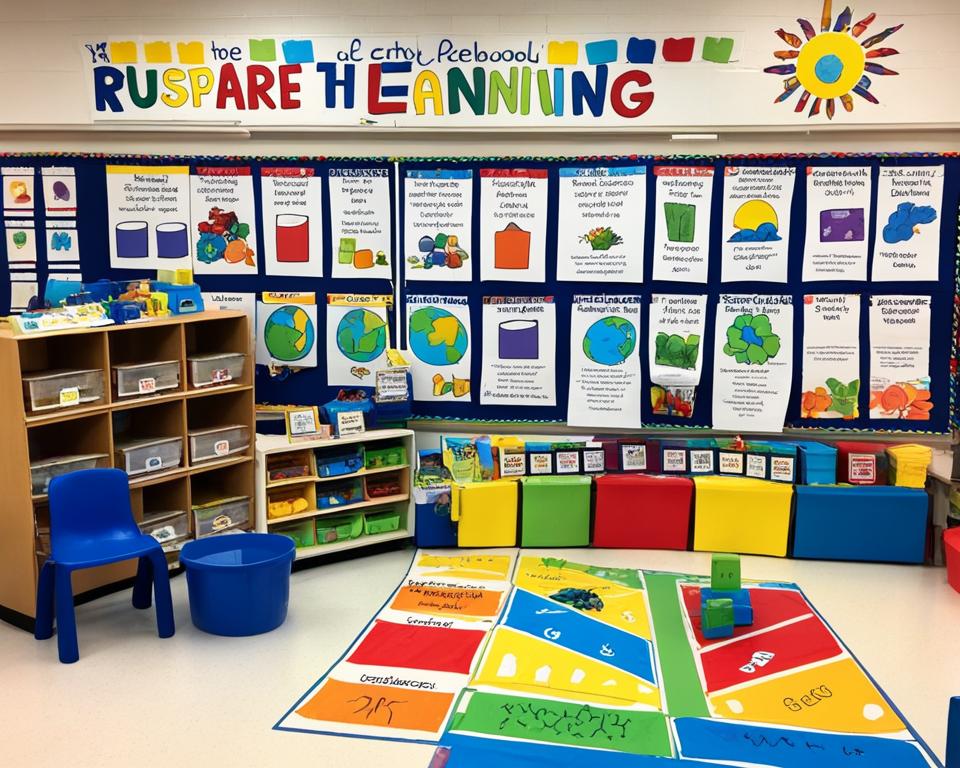
Rethinking Traditional Entry Routines
In the realm of early childhood education, traditional entry routines have long been a staple, providing structure and a sense of control for educators. However, the article explores the need to reevaluate these well-established practices. It cites the example of a teacher who had a routine of having students collect their exercise books, write the lesson title and date, and underline them with a ruler. While this routine offered a level of organization, the article notes that it consumed up to 10 minutes of a 50-minute lesson, resulting in a significant loss of valuable student learning time.
Evaluating Time Spent on Non-Learning Activities
The article encourages educators to closely examine the time spent on non-learning activities during the opening moments of a lesson. By scrutinizing these traditional entry routines, educators can identify opportunities to streamline their lesson planning and redirect that precious time towards more engaging and meaningful learning experiences.
Shifting the Focus to Immediate Engagement
Rather than adhering to time-consuming entry rituals, the article suggests that educators should shift their focus towards immediate engagement of young learners from the moment they enter the classroom. By designing lessons that capture students’ attention and ignite their curiosity from the start, educators can maximize the limited instructional time and ensure that each learning session is purposeful and impactful.
Early Childhood Learning: Strategies for Active Participation
As we delve into the world of early childhood education, it’s crucial to explore strategies that foster active participation from our young learners. One such approach is the concept of “knowledge dumps,” where students have a set amount of time or until the end of a song to record everything they know about a particular topic. This learning strategy is designed to immediately engage students and encourage them to activate their prior knowledge.
Knowledge Dumps
Knowledge dumps are a powerful tool in the early childhood classroom, allowing students to quickly share their existing understanding of a subject. By giving them a designated time frame or a song as a cue, you can create a sense of urgency and excitement, prompting them to jot down as much as they can remember. This not only gets their minds working but also provides you with valuable insights into their current level of knowledge.
Thought-Provoking Thunks
In addition to knowledge dumps, another engaging strategy is the use of “thought-provoking thunks.” These are open-ended questions that have no clear answer but instead encourage critical thinking and the sharing of diverse opinions. By posing these thought-provoking questions, you can stimulate discussion, foster student engagement, and reveal the unique perspectives of your young learners.
Multimedia Prompts
Incorporating multimedia prompts, such as images or videos, can also be a powerful way to capture the attention of early childhood students and ignite their curiosity about the day’s lesson. These multimedia prompts can serve as springboards for discussion, inspiring students to share their observations, make connections, and delve deeper into the topic at hand.
By implementing these active participation strategies, educators can create a dynamic and engaging learning environment that maximizes the learning potential of each and every child in the early childhood classroom.
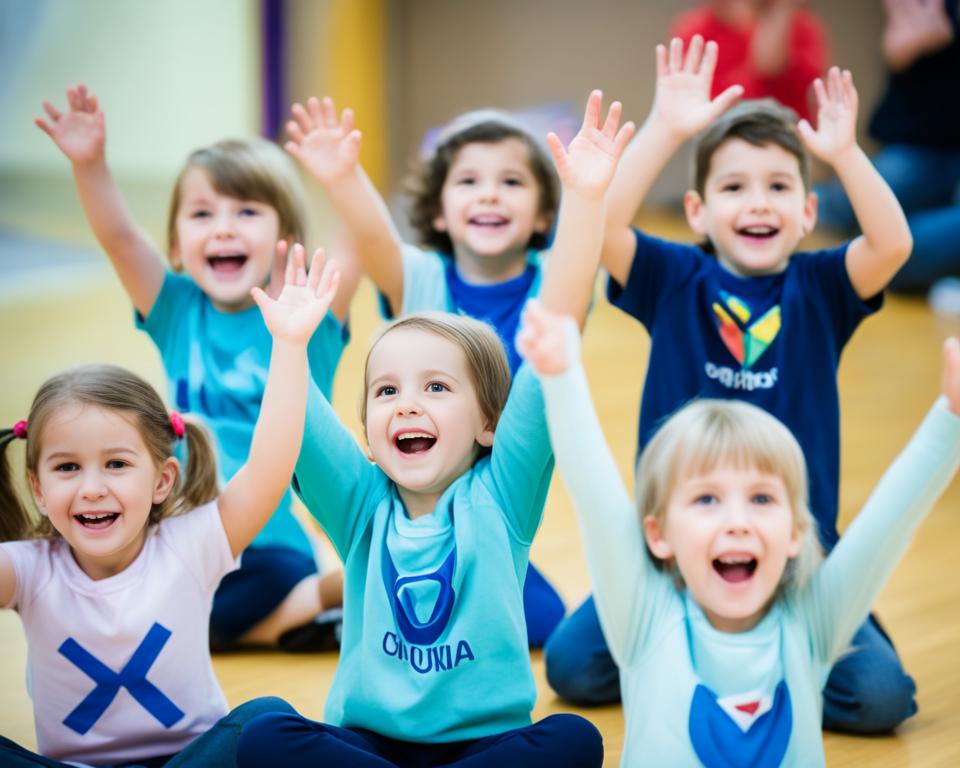
Prioritizing Learning Objectives
In the realm of early childhood education, it’s crucial to prioritize learning objectives over the traditional approach of simply having students write down the lesson objective in their books. While this routine may provide a sense of structure, it does not necessarily contribute to the student engagement and active learning that are essential for meaningful lesson planning.
Instead, I encourage educators to shift their mindset from merely ensuring that students are aware of the learning objective to designing lessons that truly foster student engagement and active learning from the moment students enter the classroom. By focusing on activities that immediately engage learners and enable them to actively explore the learning objectives, we can create a more immersive and enriching learning experience for our young students.
This approach not only maximizes the precious learning time but also instills a deeper understanding and connection to the learning objectives within the students. By prioritizing learning objectives in this manner, we can ensure that every moment in the early childhood classroom is purposeful, engaging, and conducive to the overall growth and development of our young learners.
Classroom Management Techniques for Early Learners
Effective classroom management is crucial when working with early learners. As educators, we must prioritize strategies that not only maintain order but also cultivate an environment conducive to active engagement and learning. Two key aspects to consider are capturing attention through engaging activities and monitoring behavior during active learning.
Capturing Attention Through Engaging Activities
Rather than relying on traditional “settling” activities that can consume valuable instructional time, we should design lessons that immediately capture the attention of our young students. By incorporating engaging activities that ignite their curiosity and pique their interest, we can ensure that learning is the primary focus from the moment they enter the classroom. These activities may include thought-provoking questions, interactive multimedia prompts, or hands-on exploration that encourages active learning and participation.
Monitoring Behavior During Active Learning
While dynamic, hands-on activities are essential for early learners, we must also be mindful of behavior management during these engaging moments. Carefully observing student behavior and providing timely guidance can help maintain focus and prevent disruptive incidents. By striking a balance between allowing for exploration and maintaining a structured learning environment, we can foster a classroom culture that supports active learning and positive classroom management.
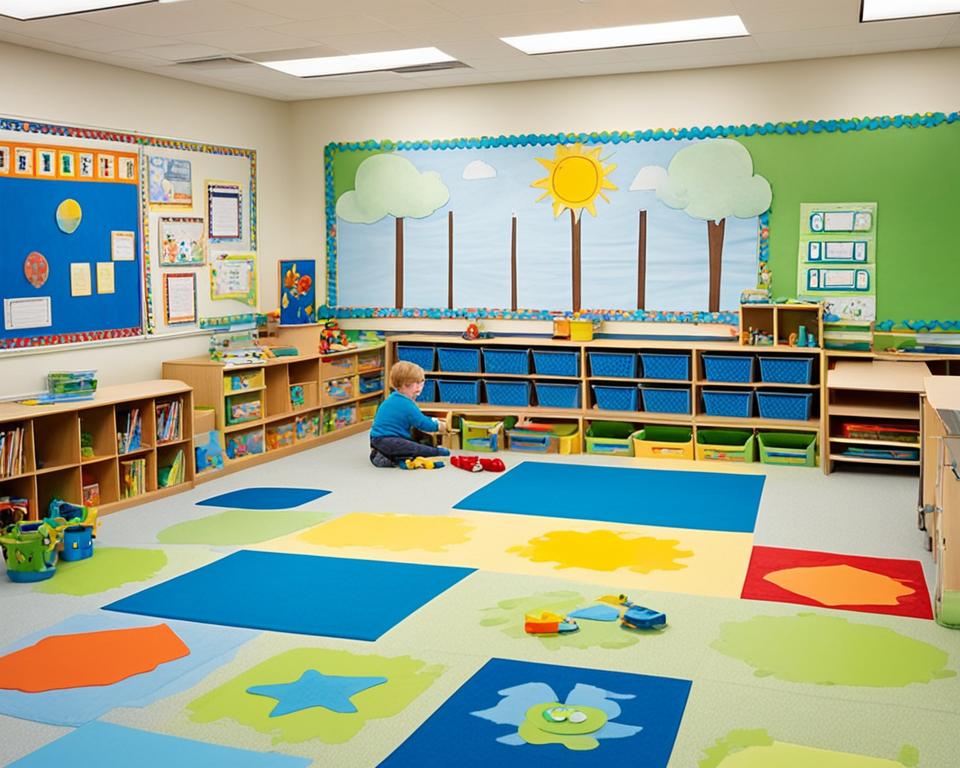
The Role of Play-Based Learning
In the realm of early childhood education, the power of play-based learning cannot be overstated. This approach recognizes the inherent value of incorporating play into the exploration of academic concepts, enabling young learners to engage with the content in a more natural and enjoyable way.
Incorporating Play into Academic Concepts
By blending play-based activities with the teaching of core academic skills, educators can create a dynamic and engaging learning environment. Young children thrive when they are given the opportunity to learn through hands-on experiences, discovery, and imaginative exploration. Whether it’s using building blocks to explore mathematical principles or role-playing historical events, play-based learning allows students to active their creativity and apply their knowledge in meaningful ways.
Fostering Creativity and Imagination
Alongside the academic benefits, play-based learning also nurtures the development of creativity and imagination in early learners. Through open-ended play and creative problem-solving, children can cultivate critical thinking skills, enhance their social-emotional development, and unlock new pathways for intellectual growth. By striking a balance between structured learning and opportunities for open-ended exploration, educators can create a learning environment that fosters the holistic development of young students.
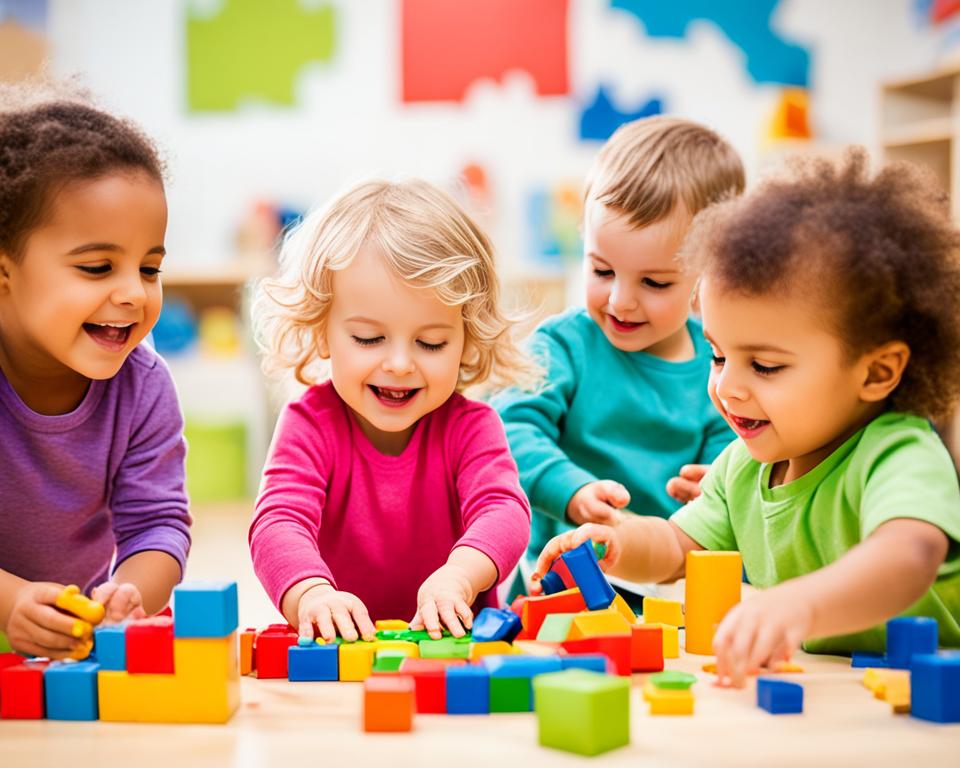
Developing Early Literacy Skills
Fostering the development of early literacy skills is a crucial component of any comprehensive early childhood education program. This article delves into the key aspects of phonics instruction and the power of storytelling to nurture language development in young learners.
Phonics Instruction Techniques
Effective phonics instruction lays the foundation for strong decoding and word recognition skills in early learners. By engaging students in systematic phonics lessons, educators can help them build a solid understanding of the relationship between letters and sounds. This, in turn, empowers young children to become confident and independent readers, capable of tackling increasingly complex texts.
The article explores a range of proven phonics instruction techniques, such as explicit instruction in letter-sound correspondences, the use of multisensory approaches to reinforce learning, and the integration of phonics-based activities into engaging, play-based learning experiences. By adopting these strategies, educators can foster the development of essential early literacy skills and set their students up for long-term success in reading and writing.
Storytelling and Language Development
In addition to systematic phonics instruction, the article highlights the critical role of storytelling in supporting overall language development and comprehension skills. By immersing young learners in rich, language-rich narratives, educators can cultivate their vocabulary, improve their understanding of sentence structure and grammar, and nurture their ability to make inferences and connections.
The article delves into the various ways in which storytelling can be integrated into the early childhood curriculum, from read-alouds and shared storybook experiences to the creation of original tales and the exploration of diverse literary genres. By fostering a love of storytelling and engaging students in meaningful language development activities, educators can empower young learners to become confident communicators and skilled comprehenders.
By embracing a multifaceted approach to early literacy development, incorporating both phonics instruction and storytelling, educators can create a dynamic and supportive learning environment that nurtures the growth of essential early literacy skills in their young students.
Parental Engagement in Early Childhood Education
Establishing a strong partnership between educators and parents is crucial in early childhood education. By involving parents in the learning process, we can create a supportive and enriched environment that benefits the holistic development of young children.
Involving Parents in the Learning Process
Fostering regular communication and collaboration between the home and school is key to parent engagement. We encourage educators to share learning objectives, classroom activities, and progress updates with families on a consistent basis. This open dialogue allows parents to better understand their child’s educational journey and actively support their learning at home.
Additionally, we recommend inviting parents to participate in various classroom activities, such as reading sessions, science experiments, or arts and crafts projects. By directly engaging with their child’s learning, parents can develop a deeper appreciation for the work being done in the early childhood classroom.
Sharing Progress and Celebrating Milestones
Regularly communicating a child’s progress and celebrating their developmental milestones is a powerful way to strengthen the home-school connection. Educators should provide families with detailed updates on their child’s academic, social, and emotional growth, highlighting areas of strength and opportunities for further development.
Hosting special events that recognize and commemorate the achievements of young learners is another effective strategy. These milestone celebrations, such as end-of-year performances or student showcases, not only acknowledge the hard work of the children but also foster a sense of pride and investment among their parents.
By fostering a strong partnership between educators and parents, early childhood programs can create a supportive and enriched learning environment that nurtures the holistic development of young children. When families and schools work together, the benefits for student learning and overall well-being are immeasurable.
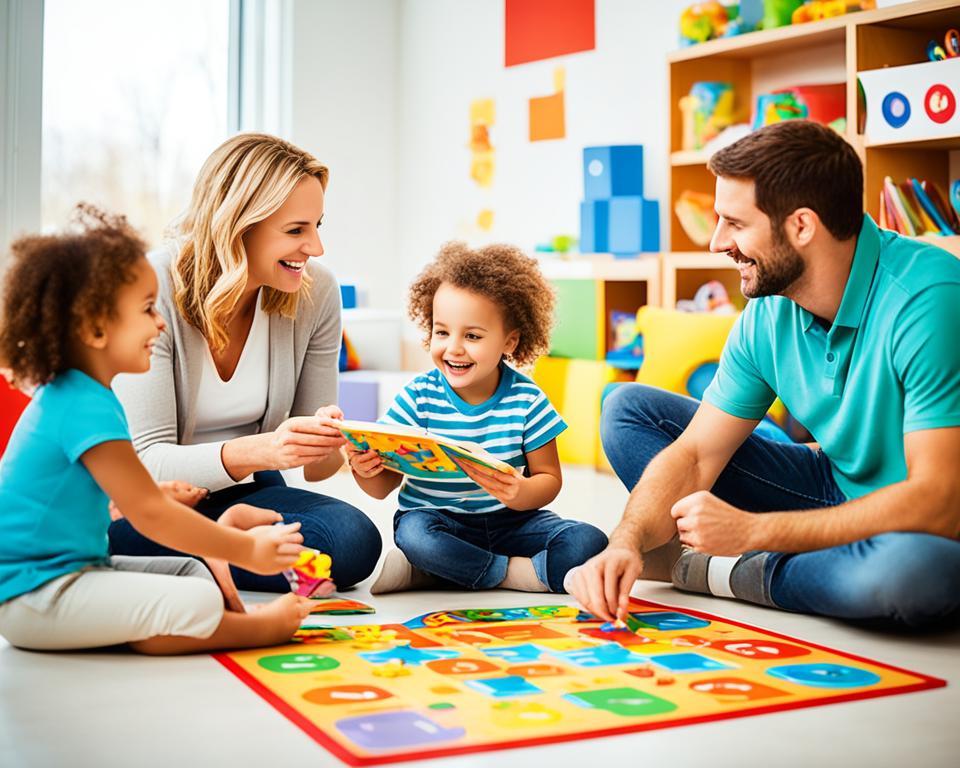
Assessing and Monitoring Progress
In the world of early childhood education, the ability to accurately assess and monitor the progress of our young learners is paramount. By implementing a comprehensive approach to progress assessment and developmental milestone tracking, we can gain invaluable insights into the learning needs and growth trajectories of our students, ultimately empowering us to provide the targeted support and enrichment they require.
Observation-Based Assessments
At the heart of our assessment strategies lies the power of observation. By closely observing our students’ learning and development in real-time, we can gather rich, qualitative data that paints a holistic picture of their progress. Through meticulous documentation and careful analysis, we can identify areas of strength, pinpoint learning challenges, and tailor our instructional approaches accordingly.
These observation-based assessments enable us to move beyond standardized test scores and gain a deeper understanding of each child’s unique learning journey. By noting the nuances of their engagement, the strategies they employ, and the skills they demonstrate, we can make informed decisions that cater to their individual needs and preferences.
Tracking Developmental Milestones
Alongside our observation-based assessments, we must also remain vigilant in tracking the developmental milestones of our early learners. By monitoring their progress against established benchmarks in areas such as language development, social-emotional skills, and cognitive abilities, we can ensure that they are on a trajectory for success.
This process of milestone tracking allows us to identify any potential delays or areas of concern early on, empowering us to collaborate with families and implement targeted interventions before small challenges escalate. By staying attuned to the nuanced progression of our students, we can celebrate their achievements and provide the necessary support to help them reach their full potential.
Ultimately, the integration of observation-based assessments and developmental milestone tracking is a powerful combination that enables us to deeply understand the learning and growth of our early childhood students. By embracing these assessment strategies, we can forge a path towards ensuring the success and well-being of every child in our care.
Conclusion
As we reflect on the strategies and recommendations presented throughout this article, it’s clear that making the most of each learning session in early childhood education requires a holistic and purposeful approach. From maximizing instructional time to adopting a “prepare for learning” mindset, the key lies in implementing engaging learning activities that capture the attention of young learners and foster their overall development.
By integrating play-based learning, nurturing early literacy skills, and promoting parental involvement, educators can create a dynamic and enriching environment that supports the holistic growth of children in the critical early years. Additionally, the effective assessment and monitoring of progress ensures that educators can tailor their instructional approaches to meet the unique needs of each student, ultimately paving the way for their success.
Ultimately, the strategies outlined in this article underscore the importance of a comprehensive and intentional approach to early childhood learning. By embracing these principles, educators can ensure that every learning opportunity in the classroom is purposeful, engaging, and conducive to the overall development and achievement of young learners.
FAQ
How can educators maximize learning time in early childhood education?
What is the “prepare for learning” mindset, and how can it benefit early childhood education?
How can educators rethink traditional entry routines in early childhood education?
What are some strategies for fostering active participation in early childhood learning?
How can educators prioritize learning objectives in early childhood education?
What are some effective classroom management techniques for early learners?
How can play-based learning be integrated into early childhood education?
What role does the development of early literacy skills play in early childhood education?
How can educators engage parents in the early childhood education process?
How can educators assess and monitor progress in early childhood education?
Source Links
- https://www.ssatuk.co.uk/blog/making-every-moment-count/
- https://www.nasbtt.org.uk/member-voice-how-making-every-lesson-count-helped-me-to-make-every-observation-count/
- https://www.nurseryworld.co.uk/features/article/mathematics-in-the-eyfs-counting-in-total
